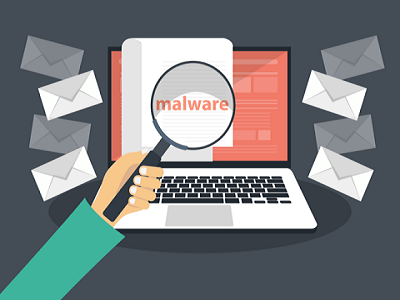Everything You Should Know About Antimalware Software
Cyber-attacks have become an ever-resent component of modern life. From individuals to huge multinationals, everyone is immune to cyber threats. Today, protecting your company from data breaches is regarded as a regular expense of running a business. Antimalware software is a program designed to detect, thwart, and remove malicious software that might have been planted on your IT systems or individual devices.

Antimalware software protects computers and computer systems against infections that are caused by rootkits, spyware, ransomware, viruses, and other forms of malware. You can install the software on dedicated network appliances, gateway servers, or individual devices. Likewise, you can purchase antimalware software as a cloud service, or have it embedded on your device’s firmware.
To understand what antimalware software is and how it works, you first need to understand what malware is. The term “malware’ is the short form of “malicious software.” This is an executable computer program that can take action once it gains control of a device or a computer system. Cybercriminals use malware to attack both businesses and individuals.
Often, malware is confused for phishing. Although both are malicious, phishing doesn’t actively sniff out passwords and other login credentials, unlike malware. Without antimalware software in place, hackers can easily access your devices and steal credentials, compromise customers’ identities, swipe secrets, or engage in other illicit activities. Antimalware solutions protect your devices and systems from exposure to cybercriminals, thus safeguarding your data from cyber threats.
How Antimalware Software Works
Generally, antimalware uses three main strategies to protect devices and computer systems against malicious software. These strategies are sandboxing, behavior-based malware detection, and signature-based malware detection. These techniques protect you against cyber threats in different ways.
Most antimalware solutions that you will come across leverage signature-based malware detection. This involves identifying malicious software by comparing a hash of the suspicious codes with a database comprising hashes of known malware. In this case, databases of known malware definitions are used to scan for malware. If the antimalware software identifies files that match the malware signature, they will be flagged as potential malware. Therefore, signature-based malware detection only detects known malware.
Uses of Antimalware Software
Individuals and businesses use antimalware solutions for much more than scanning files for viruses. Thanks to antimalware software, incoming network data will get scanned for malicious software, thus providing you real-time protection against cyber-attacks. Besides, the software can detect more complex forms of malware to offer specific protection against ransomware attacks.
Antimalware software also does the following:
- Prevents users from straying to websites that are synonymous with spreading malicious code.
- Generates and tracks metrics relating to the number of infections as well as the time needed to clear up the infections.
- Prevents the spread of malware in case one device is infected.
- It offers insights into specific malware, thus enabling administrators to determine how the network or devices have gotten compromised.
Antimalware solutions can also remove malware once they detect it. Nonetheless, if the antimalware establishes that the malware might cause further damage to your devices or system, infected files will be quarantined. This allows you to remove them manually.
Since cybercriminals consistently improve their dark art, an excellent antimalware solution is one that has multiple detection methods. Besides signature-based scanning, sandboxing, and behavior-based scanning, antimalware software should rely on real-time reputation-based systems that contain information about new malware.
As cyber criminals develop and evolve their techniques, the onus is on individuals and businesses to use antimalware solutions that are up-to-date and can combat the latest cyber threats. Failure to do so puts your devices and computer systems at the risk of damage by malicious programs, including viruses, adware, and Trojan horses.
Antimalware Software vs. Antivirus: The Key Differences
Often, the terms antivirus and antimalware get used interchangeably, with many people arguing that they are the same thing. However, there are notable differences between these two types of cybersecurity software. The main difference is that antivirus software leverage the signatures of known viruses to detect specific types of viruses.
On the other hand, anti-malware comprises anomalies that are not signature-based, which detect unknown anomalies. Antimalware software offers greater protection to your devices and computer systems by monitoring data transmitted via networks. Likewise, antimalware solutions detect and remove threats, thus safeguarding your entire devices. On the contrary, antivirus software only blocks threats that are inherent in single devices.
Your computer systems and devices need to be protected from all forms of cyber threats. You need a cloud-based antimalware software that provides full-suite protection. You need a tool that leverages the latest cybersecurity technologies to add an impenetrable security layer, thus warding off cyber-attacks.
Your online safety is paramount. Thanks to malware, you can never be too sure about the safety of your data. To guarantee a safe online experience, NuEduSEC offers a complete package of anti-malware tools that keep your network safe from both internal and external threats.